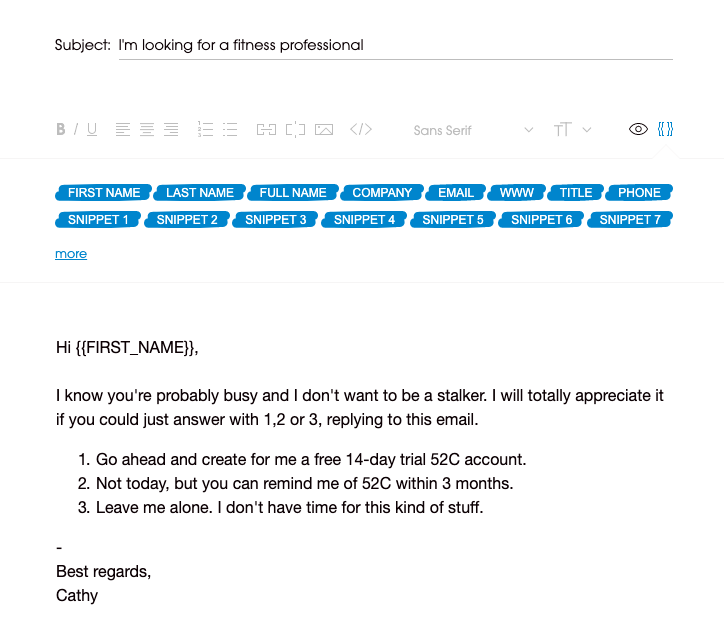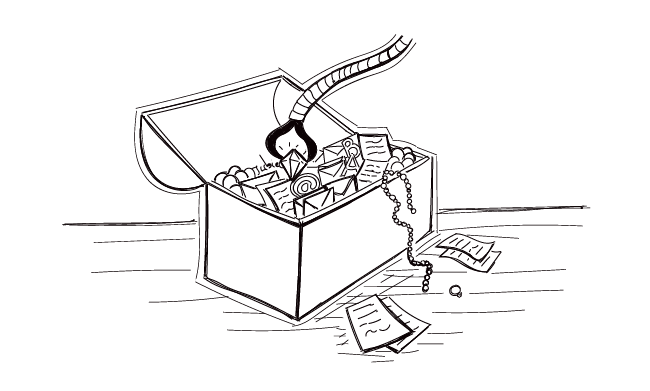How many ‘most effective’ cold email templates have you already seen on the web? How many of them do you know by heart? The ‘most effective’ phrase means that it worked great for a person who used it in the first place.
It’s a shame many cold email senders take it as the ‘most effective’ template ever that works always and for everyone. How to use the ‘most effective’ email templates in our cold email outreach? Should we use them at all?
How did the ‘most effective’ email templates work a few years ago?
We all know the famous approach by Aaron Ross from his bestseller Predictable Revenue, or Bryan Kreuzberger’s Breakthrough Email method. I see those as pioneers in the new approach to cold email. Without them, we probably wouldn’t do all the things we do with cold emails nowadays.
How do the ‘most effective’ email templates work today?
Those classic templates of the pioneers are awesome, and they definitely brought tons of new leads to people who used them. The problem is that because the templates worked so well, more and more people decided to make them a part of their own email outreach. And not in a creative way, but in the “copy-paste” way.
(…)
If you are the appropriate person to speak with, what does your calendar look like?
If not, who do you recoomend I talk to?
Thanks,
[SIGNATURE]
As a result, some addressees could get 5 cold emails a week which all were basically the same email template with different personalization data inside. And that’s a bummer…
So should we forget about the ‘most effective cold emails’ once and for all?
I wouldn’t go that far. Even if such templates are already worn out a bit, they still use some great techniques which we can include in our own cold email outreach. The key is to use them right.
Heck, at Woodpecker we even created a PDF report including the cold email templates that worked great for the people who wrote them. Additionally, we carried out an analysis on each of them and tried to pinpoint the mechanisms which actually made them work.
To download the report for free, sign up under this post.
Such an analytic approach to the ‘most effective’ cold emails allowed us to understand the reason why something works or doesn’t work in cold email. Having discovered that, we could work on our own cold email copy which wasn’t just a patchwork of sentences taken out of different templates, but copy that was original, well-personalized and thus effective.
What’s in it for you?
So how to use the templates that were extremely effective for other people?
Rule #1 Don’t be lazy
Copy & paste approach hardly ever brings positive effects, not only – but especially, when it comes to cold email outreach. Read as many templates as you can and learn from other people’s success and failures. But do not just copy & paste. Ever.
Rule #2 Be analytical
While reading the templates other people came up with, try to identify some cold email patterns. Divide each email into parts. Identify the role and purpose of each of those parts. The analysis will help you organize your own email copy later.
Rule #3 Keep your addressees in mind
Remember that you reach out to a specific group of addressees. A ‘most effective’ template which works for personal trainers will not necessarily work for SaaS marketing managers. Do some research on the people you are going to write to and only then start creating your cold email copy.
Rule #4 Practice, practice, practice
Trends in cold email change quite fast, so it’s good to keep up and improve your copy with time. What worked a couple years ago, probably won’t work so well nowadays. Take for instance the template with 3 options to choose from.

It’s a realy nice touch that worked awesome for us, but again, because it’s so great, many people use it and it kind of stops being funny for the addressees who’ve seen it in a twelfth cold email in a row.
Be careful with overusing the well-known touches. Find some creative ways to modify them for your own purposes. By making some changes from time to time you will also prevent your own email templates from wearing off.
For a good piece of analytical approach to some effective cold email templates worked out by successful start-up entrepreneurs, sign up for 15 Cold Email Templates that Will Get You Leads below this article.
FAQ on cold email template options
How do I address pain points in my cold email template?
To address pain points in your cold email template, identify a specific problem the prospect’s company faces. Use your value proposition to offer a solution. Include a clear call to action, like setting up a quick call, and make sure your message relates directly to the prospect. A tailored approach helps your cold email campaign succeed.
What makes a cold email campaign successful?
A successful cold email campaign uses compelling subject lines, mentions mutual connections, and highlights your company name early on. Present your value proposition and address the prospect’s pain points in a concise way. Use a calendar link for easy scheduling of a brief call and keep the email short to encourage replies.
What should I include in my cold sales email templates?
Cold sales email templates need a strong, compelling subject line to capture attention. Include your company name, mention a pain point relevant to the prospect’s company, and describe your value proposition. End with a call to action, like sharing a calendar link for a quick call. This approach personalizes your outreach and increases engagement.
How can I craft the best cold email template?
The best cold email template starts with a compelling subject line. Mention your company name, address specific pain points, and introduce a value proposition. Suggest a brief call if it makes sense for the prospect. Personalize the content for each recipient instead of using a copy-paste approach. Including a mutual connection can also add credibility.
What is the right way to use a sales email template?
Using a sales email template the right way means customizing it for each prospect’s company. Reference their pain points and offer a specific solution. Make sure to include a clear next step, like a brief call with a calendar link. Avoid sending generic cold emailing; tailored content increases the chance of success.
How can I write subject lines that get responses in cold emailing?
Subject lines should be direct and relevant to the recipient’s interests. Incorporate the prospect’s company or pain points to grab their attention. For example, “Quick Solution for [Company Name]’s [Pain Point]” makes the email more appealing. A compelling subject line increases open rates in your cold sales email templates.
When should I suggest a quick call in my cold email template?
Suggest a quick call after explaining your value proposition and addressing the prospect’s pain points. Use phrases like, “Does it make sense to have a brief call?” and include a calendar link for easy scheduling. This approach respects their time and streamlines the process, making your cold emailing more effective.
READ ALSO

Getting Started With Outbound Outreach: Are You on the Right Track?
Getting a good grasp of email deliverability from the very beginning is essential not only for the future success of your campaigns but also for your domain safety. I’ve conducted some research to find out what cold email senders should pay attention to when they want to increase their cold email deliverability rate. Let’s see what I’ve found out.

What You Should Definitely Steal From Cold Email Templates
The core purpose of cold emailing is to start a conversation with a prospective customer and build a valuable business relationship off of it. However, to get there you need to catch your prospect’s attention and spark their engagement first. Your cold email copy plays a major role in achieving this goal. Coming up with compelling content is not a piece of cake, though. It takes time, effort and a substantial amount of creativity. Although copying a cold email template you found on Google won't get you any customers, seeing what others have written in their email copy is a source of inspiration. We studied quite a few cold email templates and summed up the most effective formulas you can steal to craft your own email copy.

What to Write in an Opening Message to Ace Cold Outreach
This is the blog post for cold email newbies. Or those of you who want to try something new with email outreach but lack inspiration. I'd like to propose that we rethink the ways of writing an opening message.

